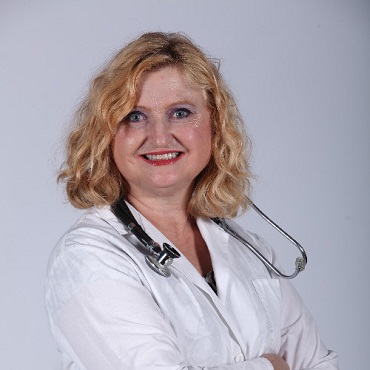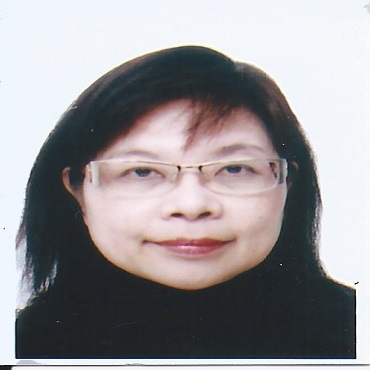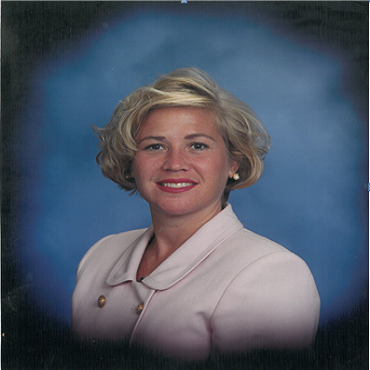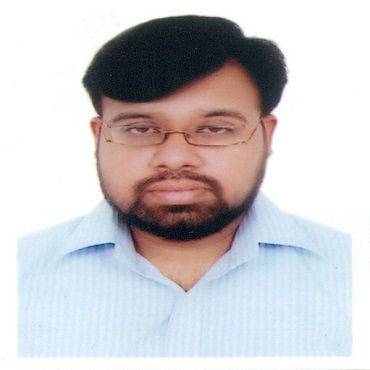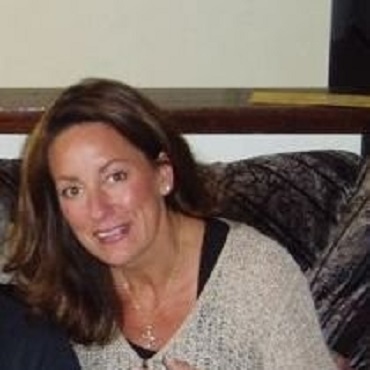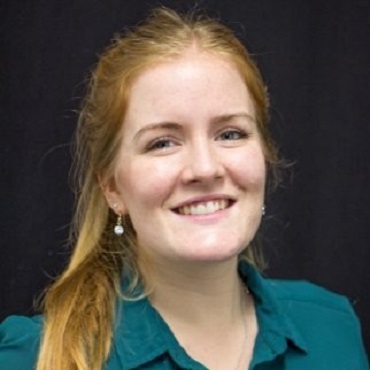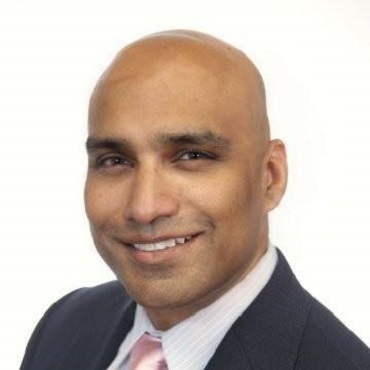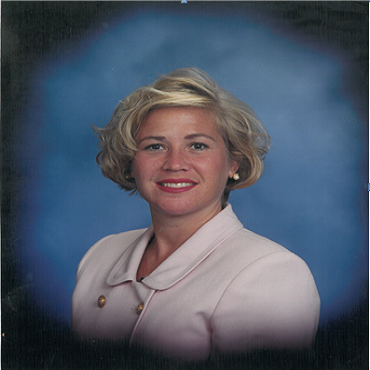Scientific Program
Keynote Session:
Oral Session 1:
- Nursing Research and Education
Title: The public image and education of nurses
Biography:
Originally educated in Canada, Heather completed her Masters in Science, in Nursing Education at the University of Hartford, Connecticut, and specializes in Adult Medical Surgical Critical Care, Leadership, Psychiatry, Geriatrics, Transcultural Nursing, and Simulation Learning. She has forty years of diverse Nursing experience, from ICU to Infection Control, Psychiatry, and Transcultural and Trans-generational Education. She is a Nurse educator, published writer, scriptwriter, and a textbook reviewer. Heather has taught at UCLA, WCU, Seminars & more. She is the CEO of Walsh Consulting Services, Los Angeles, California
Abstract:
Title: A mixed methods approach to develop a nursing educational program concerning QT interval prolongation to prevent sudden cardiac death
Biography:
Shu Ling Lo is an associate professor of School of Nursing, Chang Gung University of Science and Technology, Tauyuan, Taiwan. Teaching critical care nursing, nursing research and current issues in nursing. Currently, she also serves as a nursing consultant of Taiwan Diabetic Association. She received a BS in nursing from Boston University, MS in nursing with cardiovascular speciality, from University of Rochester, She hold a PhD in nursing with heart rhythm speciality from University of San Diego.
Abstract:
Multitudinous studies have suggested that a prolonged QT interval may be a marker of increased risk of sudden death in patients with a variety of diseases, and have discovered an inverse relationship between the QT interval and patient mortality in the general population that includes patients with or without heart attack. For safety, patients rely on the care of nurses, who have expertise in overseeing high-tech monitors. Existing nursing educational programs concerning QT interval as primarily focus on measurements of QT intervals, and they reveal much inappropriate measurement-taking and poor knowledge about QT intervals.
An educational program for critical care nurses on strategies for managing patients with QT prolongation to prevent related cardiovascular events is via mixed methods approach.
Thirty-nine subjects enrolled in this study completed three phases in one hospital. Major findings of subjects’ knowledge, attittulde and practice are : 1. improved knowledge across all subjects; 2.moderate decreases in delay tests. 3.Low correct response in measurement of QT interval and prolongation causes of QT intervals. 3. subjects’ knowledge of normal ranges of QT intervals in post-tests showed increases; however, correct answer rates remained below 70%. 4.Qualitative findings on awareness and behavioral changes revealed that many subjects focused better while administering QT- prolonging drugs and discussed considerations with nursing or medical colleques.
Although some knowledge remained unclear for critical care nurses at the post-test, the total right response rate declined slightly for delay tests and the project raised awareness among subjects about QT interval prolongation and their behavioral changes when encountering this critical situation. Lastly, we opened up several new areas of investigation including multifaceted nursing issues.
Title: Improve nurse and midwife education management system using NEMS tool
Biography:
Md. Mahbubur Rahman, completed his MS in computer science from Dhaka University, Completed MBA in MIS from IBAIS University in Bangladesh. He worked as a consultant for different international organization for last 15 years. Presently, he worked as an IT Specialist at Human Resources for Health Project in Bangladesh funded by Global Affairs Canada. He worked for development of Nursing sector for Directorate General of Nursing and Midwifery under the Ministry of Health and Family Welfare of Government of Bangladesh.
Abstract:
In Bangladesh, about 18,000 students are admitted every year into 322 nursing institutes and colleges. BNMC have system to keep all students’ info into student’s registration database. There is demand for digitalization of nursing education specially the examination management for improving record keeping. HRH project designed an electronic NEMS for better education management for Nursing Institutes in consultation with DGNM, BNMC and MOHFW. Key developmental steps were followed to develop the NEMS software. NEMS is mainly divided into seven modules- Faculty, Student, and Exam result, Library, Hostel, Laboratory and Inventory. The NEMS software will support continuously to track information of nurse-midwife that will be compatible with the BNMC database and PMIS software. Objectives of this initiatives to improve ICT based nursing education management system with a phased introduction of web-based NEMS to nursing institutes under the MoHFW. The key approach of this paper will describe and share the methodological aspects with regard to database management, preparation of database reports, data security, privacy and queries, and network management. Keeping all the necessary requirements in mind, this web based NEMS has been designed and developed with the objective that the system is technically easy and fast to access on web with limited skills and interest. The software is mainly divided into seven dynamic modules- Faculty, Student, and Exam result, Library, Hostel, Laboratory and Inventory. This is the first kind of ICT based web intervention to replace the manual system at the institute level of nursing education sector.
Title: Pronation therapy on patient outcomes
Biography:
Lorrie Blitch has an impressive and diverse career in nursing and as a business owner. She is owner of Magellan Christian Academies for the past 18 years in Phoenix, Arizona and Jacksonville, Florida. Her schools have won numerous awards including Declaration of Magellan Day by the Mayor of Jacksonville, Florida in 2010. Ms. Blitch was awarded the prestigious title of “Top Women in Business” in Jacksonville, Florida by Jacksonville Magazine and recognized in Arbus Magazine as a “Female Entrepreneur." She is a published author of children’s books achieving number one on Amazon. Her experience in nursing is impressive that encompasses critical care, trauma, cardiovascular intensive care, toxicology, administration and management, nursing professor, medical-legal nursing and field hospital nursing. She is a nurse educator for the Banner Health System in Phoenix, Arizona responsible for the education of multiple service lines.
Abstract:
Clinical studies have found that patients with acute respiratory distress syndrome (ARDS) account for approximately 5% of all hospitalized patients subjected to mechanical ventilation. Most studies have shown that patients with mild ARDS (PaO2/FiO2 200–300) represent only 25% of the cases, while the remaining 75% correspond to patients with moderate or severe ARDS (Estoben, etal., 2008) Patients with acute pulmonary complications may benefit from prone therapy, which improves the ventilation/perfusion ratio (Sud et al., 2014). Relative to the supine position, rotating the patient while in the prone position can assist with moving the heart and lung tissue so that secretions and debris can be removed in order to allow expansion of the alveoli, and minimization of alveolar stretch and strain (Berry, 2015). Such positioning improves oxygenation sufficient that it can reduce the risk of mortality by hypoxia in patients suffering from acute pulmonary distress syndrome (Sud et al., 2014).
In a systematic review and meta-analysis of 11 randomized controlled trials, prone positioning was found to significantly reduce mortality with a risk ratio of 0.74 (95% CI 0.59-0.95) relative to supine positioning (Sud et al., 2014). The study found that improvements in oxygenation in the prone group exceeded those in the supine group, although the risk of forming pressure ulcers, obstruction of the endotracheal tube, and dislodgement of the thoracotomy tube were also higher in the prone group. Another study of 466 patients with acute respiratory distress syndrome found statistically significant improvement in the mortality rates at 28 days and 90 days among prone patients relative to supine patients (Guérin et al., 2013). Prone therapy has thus been found to significantly benefit patients with acute pulmonary complications.
In the past, however, manually rotating patients to the prone position was often difficult, especially if the individual had conditions such as aortic rupture, prominent external fixation, obesity, or instable pelvic fractures (Kim & Mullins, 2016)
Title: Risk factor in nursing and healthcare professionals
Biography:
Dr Wasif has occupied many diverse roles in hierarchy Healthcare management in the past. UAE licensed General Physician and practicing medicine. Proactive and strong role in strategic Leadership, he has. He is Certified Six Sigma Green Belt, Total Quality management and also holding a Prestigious credentials i.e., Certified Professional in Healthcare Quality (CPHQ). Dr. Wasif has achieved MBA degree from Delaware University USA.
Abstract:
Healthcare providers role to prevent and control infections in healthcare facilities by using advance strategies and to decrease transmission of infectious diseases from healthcare workers to patients and vice versa is very crucial. We will understand why Hand hygiene, Isolation, standard Precautions and correct use of personal protective equipment (PPE) during the patient care are important, to reduce healthcare associated infections and Occupational health hazards. We shall share Quality improvement methodologies (FOCUS-PDCA & FMEA) and importance of implementations in healthcare facilities.
We shall discuss about post exposure Interventions to infectious disease in healthcare field and how to prevent and treat employee and also share guidelines for work restrictions to employees suffering from infectious diseases like Meningococcal Meningitidis, HAV, HBV, HCV, HIV, MDRO, RSV, Varicella, TB and Influenza.
According to Centers for disease control and prevention (CDC), results of a project known as the HAI Prevalence Survey (2014 Data) were published in 2016. The Survey described the burden of HAIs in U.S. hospitals, and reported that, in 2011, there were an estimated 722,000 HAIs in U.S. acute care hospitals. Additionally, about 75,000 patients with HAIs died during their hospitalizations.
Title: An initiative of e-solution for nursing sector in Bangladesh
Biography:
Monira Parveen, completed her Graduates from Dhaka Medical College under the University of Dhaka. She worked for different international organization at senior level position. She is Canadian. She is now working as a Canadian Field Manager at CowaterSogema Internal Inc. based in Dhaka, Bangladesh.
Abstract:
In Bangladesh, about 18,000 students are admitted every year into 322 nursing institutes and colleges. BNMC have system to keep all students’ info into student’s registration database. There is demand for digitalization of nursing education specially the examination management for improving record keeping. HRH project designed an electronic NEMS for better education management for Nursing Institutes in consultation with DGNM, BNMC and MOHFW. Key developmental steps were followed to develop the NEMS software. NEMS is mainly divided into seven modules- Faculty, Student, and Exam result, Library, Hostel, Laboratory and Inventory. The NEMS software will support continuously to track information of nurse-midwife that will be compatible with the BNMC database and PMIS software. Objectives of this initiatives to improve ICT based nursing education management system with a phased introduction of web-based NEMS to nursing institutes under the MoHFW. The key approach of this paper will describe and share the methodological aspects with regard to database management, preparation of database reports, data security, privacy and queries, and network management. Keeping all the necessary requirements in mind, this web based NEMS has been designed and developed with the objective that the system is technically easy and fast to access on web with limited skills and interest. The software is mainly divided into seven dynamic modules- Faculty, Student, and Exam result, Library, Hostel, Laboratory and Inventory. This is the first kind of ICT based web intervention to replace the manual system at the institute level of nursing education sector.
Title: Utilizing pulsed electromagnetic fi eld (pemf) therapy (diapulse) for drug-free pain management to eliminate reliance on opioids for non-malignant chronic pain
Biography:
Dr. Sharon has completed his DNP from Brandman University, Irvine, California in October 2015. He is board certified by the American Nurses Credentialing Center in Adult-Gerontological Primary Care. In 2014, while a nurse practitioner student, he was awarded a diabetes research grant by the American Association of Nurse Practitioners for his pioneering work in utilizing pulsed electromagnetic therapy to stimulate angiogenesis in the plantar skin of people with diabetic neuropathy. He has published 3 books and more than 12 journal articles.
Abstract:
The Federal and State governments have declared the presence of an opioid addiction pandemic in the United States claiming the lives of more than 55,000 in 2015 (Rudd, R. A., Seth, P., David, F. and Scholl, L. 2016). The pharmaceutical manufacturers of the numerous FDA-approved opioid drugs are raking in more than $5 billion per year with about 2 million chronic pain sufferers addicted. The irony of this narcotic use and abuse conundrum is the existence of evidence-based technology for drug-free pain management which is not covered for reimbursement among public and private third-party payers. Therefore, this paper is presented a review of the recently published evidence that shows the efficacy of resolving the chronic inflammation, edema and ischemia that causes non-malignant chronic pain with PEMF therapy, a non-invasive, non-thermal radio transmission of electrical impulses. Thereby, we may conclude that there is evidentiary basis for providing a viable risk-free alternative to prescribing opioid analgesics in such cases. Additionally, the expected result of treatment is to wean opioid-dependent, chronic non-malignant pain patients off opioids while reducing pain and minimizing withdrawal symptoms.
Title: Pediatric palliative care medicine
Biography:
Abstract:
Pediatric palliative care is often misunderstood and often enters in to a child and families lives too late. The overall goal of pediatric palliative care is to improve the quality of life for a child with an underlying life-threatening illness or problem. It focuses on prevention and relief of suffering, regardless of the stage of disease, and comprehensively addresses the physical, psychosocial, or spiritual needs of the child and family. The World Health Organization (WHO) describes pediatric palliative care as “the active overall care of the child's body, mind, and spirit, and involves providing support to the family. It begins when illness is diagnosed and continues regardless of whether or not a child receives treatment directed at the disease”. It is hoped that families of infants and children with a diagnosis where cure may not be possible are introduced to the palliative care team at the time of diagnosis, yet often is this the case. Palliative care for children ideally should be introduced from the beginning of diagnosis or treatment as it helps to ensure an ongoing focus on quality of life and relief of symptoms, so the child may continue to enjoy life.
Title: Demand of temporary nurse staffing in German hospitals- A qualitative study on the influence on inpatient care
Biography:
Carolin Fasen and Alica Schnitzler are two young health care professionals working for 5 years as travel nurses. They completed their Bachelor of Science at Charité- University of Medicine in Berlin, Europe’s greatest research hospital/university. Combining their interest in bed-side nursing and research supports the adaption of policy to implement new strategies into the daily patient care to improve the outcome. Both researches continue with their graduate programs in Europe and the US.
Abstract:
Changes within the German demographics resulting in an increased need of health care professionals. In times of a nurse shortage this development is a challenge for hospitals to provide adequate nurse staffing for their patients. But the alleged solution to hire temporary nurses impacts the inpatient care. This study presents international and national research on the phenomenon and examines head nurses’ experiences with temporary nurses. Through expert interviews and utilizing qualitative content analysis, themes were identified, such as the impact of temporary nurses on daily routines, health promotion, the nursing profession, staff booking and as well as the future perspectives. The findings of this research indicate that temporary nurse staffing is affecting daily routines and the dynamics in the health care team. The temporary staffs’ influence depends much on if a they are hired short-term or long-term on a ward. Consequently, hospital procedures need to be adapted and regulations on temporary staffing needs to be set in place to guarantee a continuous and high-quality patient care.
Title: Using artificial intelligence/machine learning algorithms to determine risk of opioid overdose
Biography:
Dr. George Mathew (MD) serves as DXC Technology’s Americas Public Sector team’s Chief Medical Officer. He joinedHPE from Aetna/ActiveHealth where he served as the Medical Director for Quality and Analytics Programs. He was responsible for the building and maintenance of the quality measures library supporting their proprietary analytics platform software. Dr. Mathew holds a Medical Doctorate from Boston University, completed his residency at Yale University, and has a Master of Business Administration from Duke University’s Fuqua School of Business. Dr. Mathew is Board Certified in Internal Medicine and certified in Clinical Informatics and Medical Quality.
Abstract:
Federal, state and local officials and health care professionals are researching, developing and implementing initiatives targeted at reducing opioid use, abuse, overdose and related-deaths. These efforts have focused on prescribing; developing guidelines for opioid prescribing and expanding use of Prescription Drug Monitoring Programs to reduce the prescribing of opioid medications. Yet the death rate continues to climb (~64,000 in 2017, an increase from 2016).
With approximately 30% rehabilitation costs being covered by Medicaid programs nationally and the promise that machine learning and predictive modeling bring to healthcare, the focus of the data analytics needs to shift from describing the problem to treating it.
Join leaders and partners from DXC Technology as they make the case and address the following;
- Data sharing difficulties
- Problems operationalizing the findings of data analysis, and;
- Remaining compliant with current rules and regulations regarding privacy and security
- Current available solutions to effectively address the changing opioid crisis
Title: A study on current status of university health care programs in South Korea
Biography:
Jeonghee Park is professor at Department of Nursing of Masan University since 1985 teaching Community Health Nursing. She received a B.S. from Seoul National University in 1978, and a Master of Eductional from Seoul National University in 1983. She holds a PhD in Education from Kyungbook National University. She has been actively engaged in research and studies on nursing education and public health for the last 30 years by publishing books on the same topics that are used as textbook at many universities. Also, she is the Chairman of Korean Academy of University Health, where the members seek for best ways to improve health care programs for university students.
Abstract:
.To introduce the history and current status of university health care program of South Korea
.To identify the strength and limitation of university health care in South Korea
The University Health Care Program of South Korea
. The history of university health
.To introduce Yi et al study
.Other university health study
.The strength of South Korean university health
.The limitation of South Korean university health
.For the future
Title: Pronation therapy on patient outcomes
Biography:
Lorrie Blitch has an impressive and diverse career in nursing and as a business owner. She is owner of Magellan Christian Academies for the past 18 years in Phoenix, Arizona and Jacksonville, Florida. Her schools have won numerous awards including Declaration of Magellan Day by the Mayor of Jacksonville, Florida in 2010. Ms. Blitch was awarded the prestigious title of “Top Women in Business” in Jacksonville, Florida by Jacksonville Magazine and recognized in Arbus Magazine as a “Female Entrepreneur." She is a published author of children’s books achieving number one on Amazon. Her experience in nursing is impressive that encompasses critical care, trauma, cardiovascular intensive care, toxicology, administration and management, nursing professor, medical-legal nursing and field hospital nursing. She is a nurse educator for the Banner Health System in Phoenix, Arizona responsible for the education of multiple service lines. Ms. Blitch served her country honorably as a Naval Officer for 20 years. She lectures internationally on nursing topics. Ms. Blitch holds a bachelor’s degree in nursing and a master’s degree in nursing education and is pursuing a doctorate degree in nurse anesthesia. She sits on the Board of Directors for the Banyon School, New Delhi, India. She lectures on the dangers of academia's "Indoctrination Establishments” and the importance of returning to traditional academic learning.
Abstract:
Clinical studies have found that patients with acute respiratory distress syndrome (ARDS) account for approximately 5% of all hospitalized patients subjected to mechanical ventilation. Most studies have shown that patients with mild ARDS (PaO2/FiO2 200–300) represent only 25% of the cases, while the remaining 75% correspond to patients with moderate or severe ARDS (Estoben, etal., 2008) Patients with acute pulmonary complications may benefit from prone therapy, which improves the ventilation/perfusion ratio (Sud et al., 2014). Relative to the supine position, rotating the patient while in the prone position can assist with moving the heart and lung tissue so that secretions and debris can be removed in order to allow expansion of the alveoli, and minimization of alveolar stretch and strain (Berry, 2015). Such positioning improves oxygenation sufficient that it can reduce the risk of mortality by hypoxia in patients suffering from acute pulmonary distress syndrome (Sud et al., 2014).
In a systematic review and meta-analysis of 11 randomized controlled trials, prone positioning was found to significantly reduce mortality with a risk ratio of 0.74 (95% CI 0.59-0.95) relative to supine positioning (Sud et al., 2014). The study found that improvements in oxygenation in the prone group exceeded those in the supine group, although the risk of forming pressure ulcers, obstruction of the endotracheal tube, and dislodgement of the thoracotomy tube were also higher in the prone group. Another study of 466 patients with acute respiratory distress syndrome found statistically significant improvement in the mortality rates at 28 days and 90 days among prone patients relative to supine patients (Guérin et al., 2013). Prone therapy has thus been found to significantly benefit patients with acute pulmonary complications.
In the past, however, manually rotating patients to the prone position was often difficult, especially if the individual had conditions such as aortic rupture, prominent external fixation, obesity, or instable pelvic fractures (Kim & Mullins, 2016). The technical difficulties in manually rotating patients often precluded pronation therapy as a treatment for severe acute pulmonary complications (Berry, 2015). The RotoProne Therapy system (RotoProne; Arjo Huntleigh, Addison, Illinois) is a bed that provides kinetic therapy to patients by rotating them at an angle from 40-62 degrees side to side in a slow and gentle fashion (Jackson, Verano, Fry, Rodriguez, & Russian, 2012). Multiple studies have shown that the use of the RotoProne Therapy system can allow for a wider range of respiratory care patients to receive pronation therapy, but care must be used with this system in order to avoid skin breakdown and concomitant pressure ulcers.

